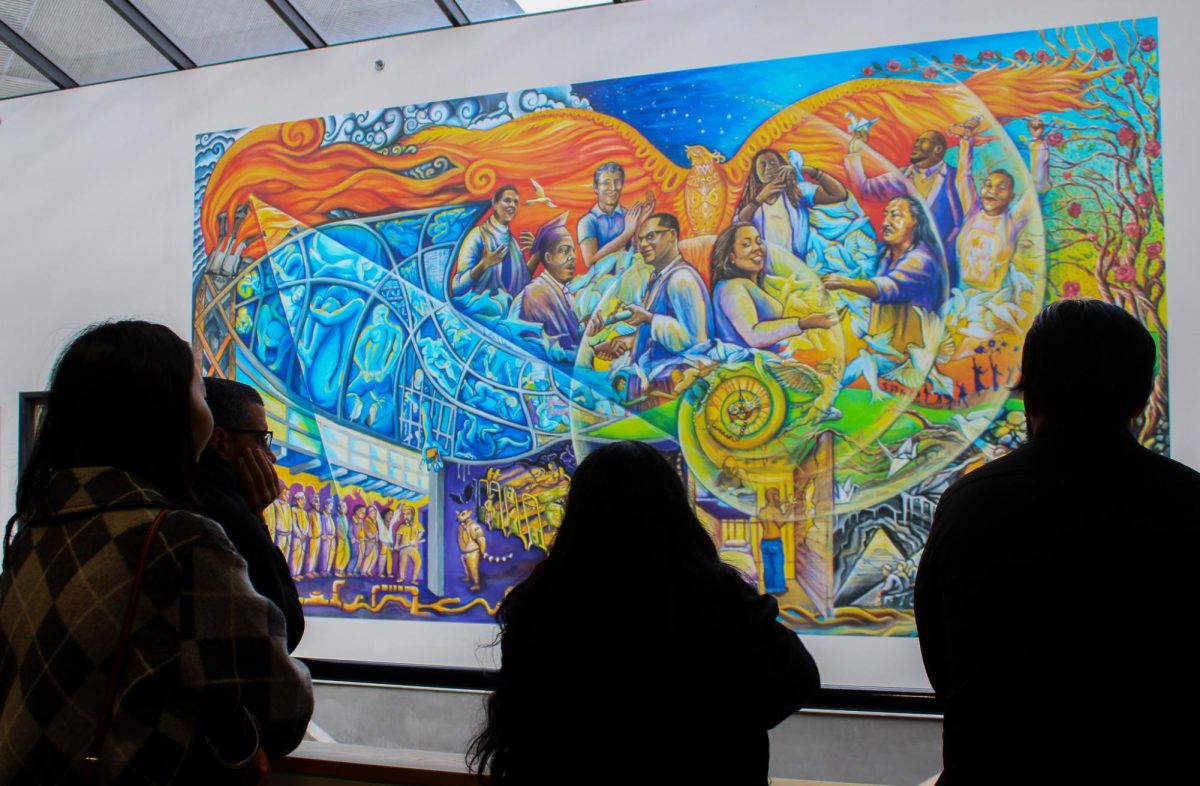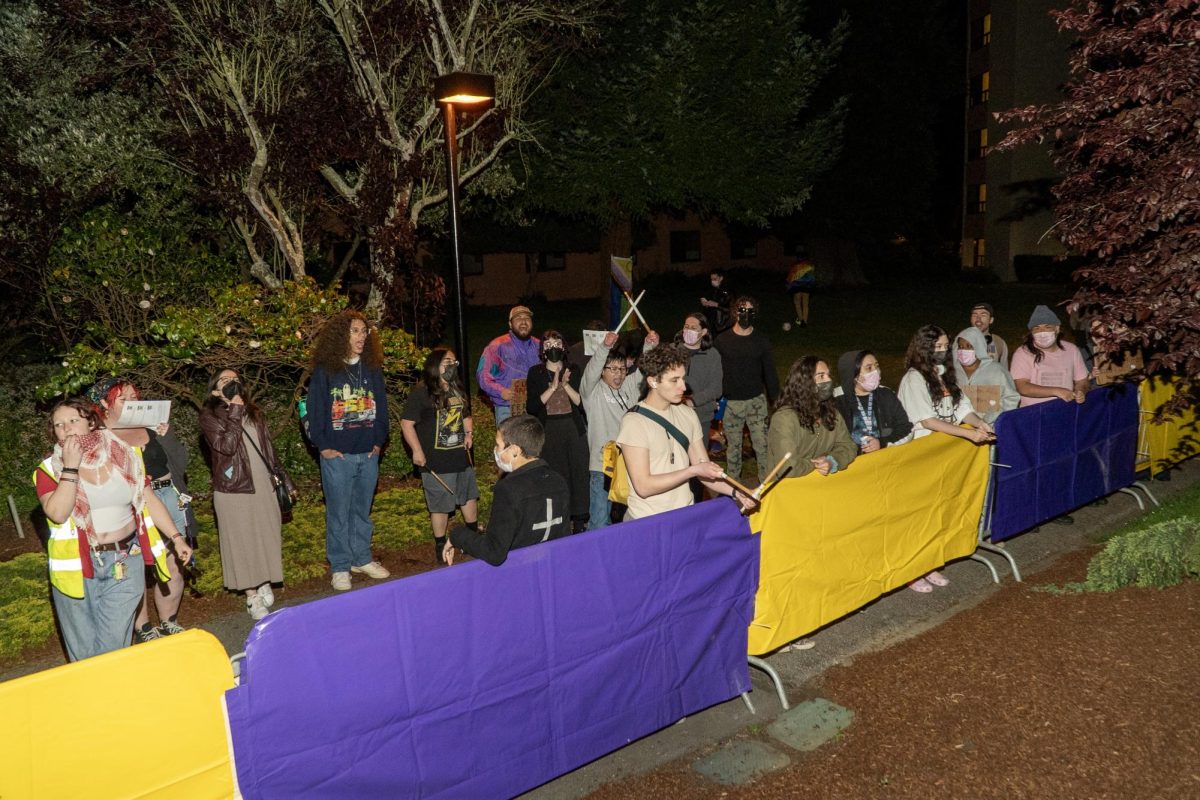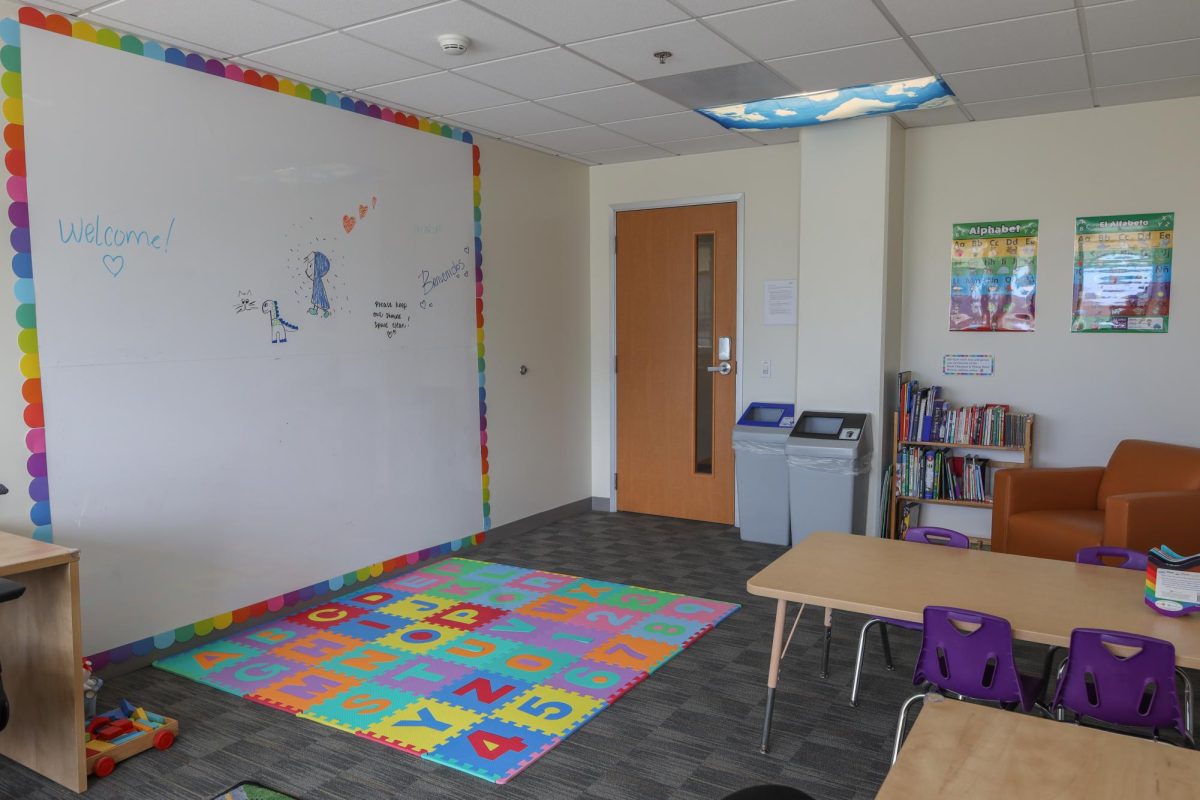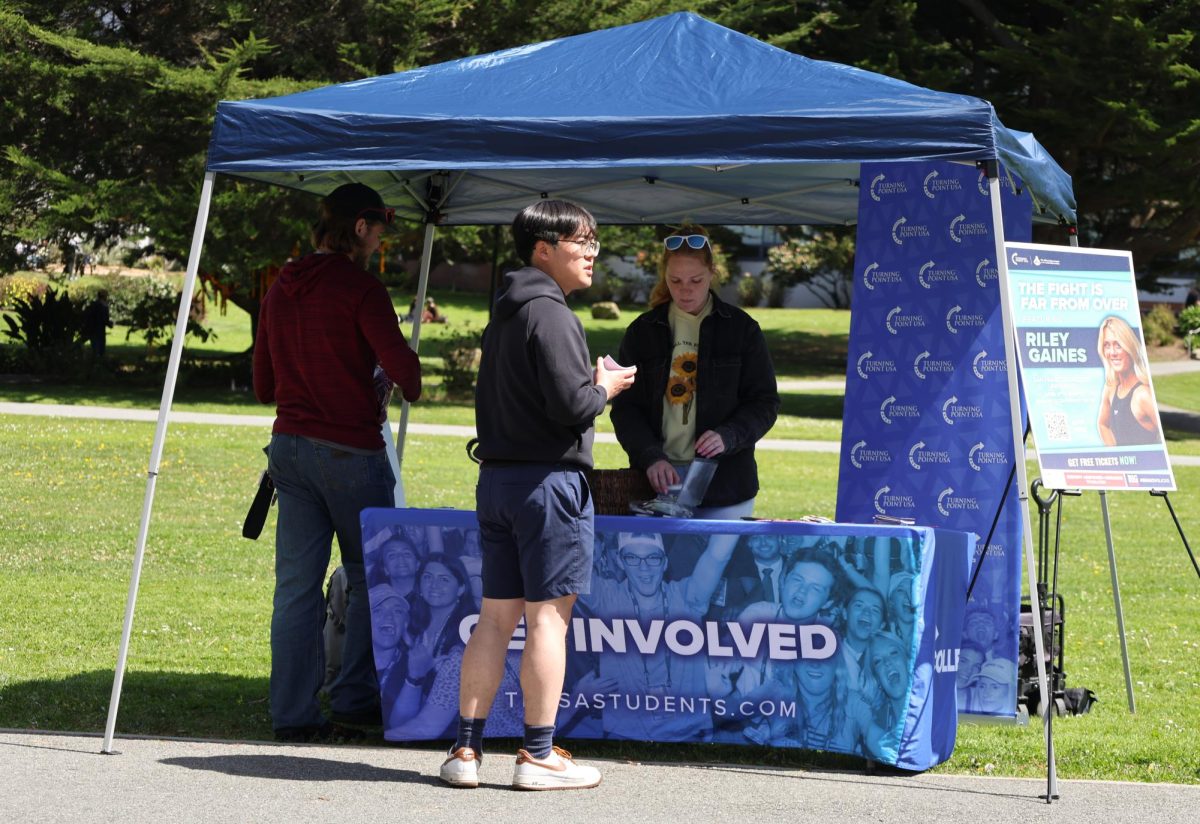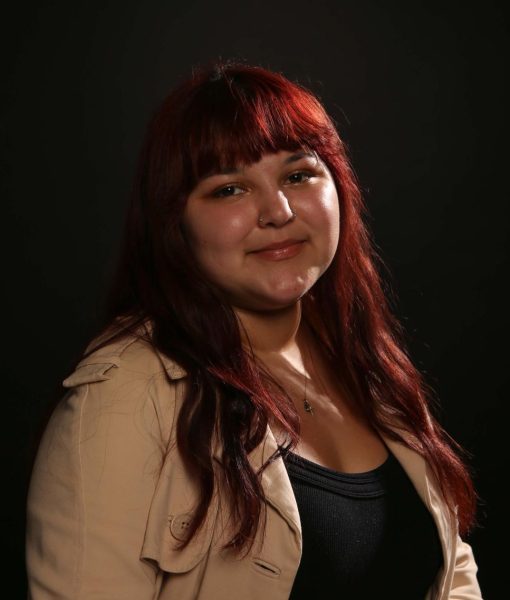Walking up the stairs in the Cesar Chavez Student Center to the terrace level, Noemi Perdomo, an ethnics studies representative for Associated Students, is greeted with a vibrant mural that, despite its colorful nature, shows a deeper meaning of the journey for students who have been incarcerated and are now at San Francisco State University.
As Perdomo looks up at the mural, the details of a prisoner making a letter to Project Rebound turn into a paper bird, which is then thrown out of a hole in the cell, catching her eyes. Not only because of the message of trying to gain a second chance but because of what the paper bird turns into.
The singular bird swiftly evolves into a dove, eventually forming a flock, symbolizing the hope granted to these prisoners that one day they will regain their freedom, and through that freedom, they will attain education.
At first, there was not going to be any more additional mural after the Native American mural was made, according to Gabriela Segovia-McGahan, an administrative analyst with American Indian Studies, but she made an effort to find an area for the Project Rebound mural.
“We actually walked around the building, we walked outside of this building, we then walked to the terrace up here and landed here because what she was talking about incarceration was actually right around the corner, so it makes sense for it to be here,” Segovia-McGahan said.
The mural plays off the allegory of the cave, a famous story from Plato as explained by one of the artists who worked on it, Yazmin Madriz.
“That’s really the spirit of Project Rebound, of how they’re always going back into the cave, back into prison, back into jails to show the truth of what else is there outside or what the different types of life that there is outside the cave,” Madriz said. “In the cave, there is prisoners and they only got to see a reality that the guards painted for them.”
Madriz explained the mural is a story that must be read from left to right as it goes from darkness to light.
The beginning of the mural depicts a slave ship because that is where incarceration starts and it displays a variety of people to show that it can happen to anyone.
As it moves down, the mural displays people getting incarcerated and then in their cells, which highlights how much money it takes for prisons to run.
“So much money to talk to their loved ones, send money to put money on their book to feed them,” Madriz said. “That’s where we come into this scene where all these beds are being stacked up, all these bodies but they’re just money.”
George Turner, the director of Project Rebound, further proved this point by describing how prisoners have to live while at prison.
“Picture a small cement cell, everything gray, the beds, the walls, an immovable stool,” Turner said. “Everything except the stainless steel sink and toilet. This is where the person living inside eats, sleeps and exists for 22 and a half hours a day for a decade. In some cases, there are no windows, nothing but concrete.”
Turner also recalls an encounter he had with someone in prison who said they were lucky if they were able to get out of the cell for 30 to 90 minutes a day.
As the mural gets to the right, there is hope shown in doves and images of graduates that make the viewer know that things can change if people who have been formerly incarcerated are given a second chance.
According to Perdomo, she has had family members who have been incarcerated, so she knows how hard it can be for them and that is why she wanted to support by showing up to the mural celebration.
The mural had its sixth annual celebration on Oct. 13, which also marked the opening of the Pelican Bay Art Exhibit.
The Pelican Bay Art Exhibit showcases work from incarcerated people inside Pelican Bay State Prison.
This opportunity is made possible because the College of Redwood Pelican Bay Scholars program provides courses that prisoners can take while serving their time in prison to get their associate degrees.
The artists who have their work displayed at the exhibit were not able to join the event via Zoom, due to technical difficulties at the State prison.
Tiffany Caesar, an assistant professor in Africana Studies at SFSU, was in attendance at the art gallery and thought it was beautiful.
“I think it was George who described how small those incarceration cells are and there’s no color. There’s nothing vibrant about it,” Caesar said. “To walk into the gallery and see color and images of fluidity and flying and happiness and even humor, it shows you that they’re living. They found a way, even within the jail cell, to break out a bondage through the creation of art, they were able to tap into something and that’s inspirational.”
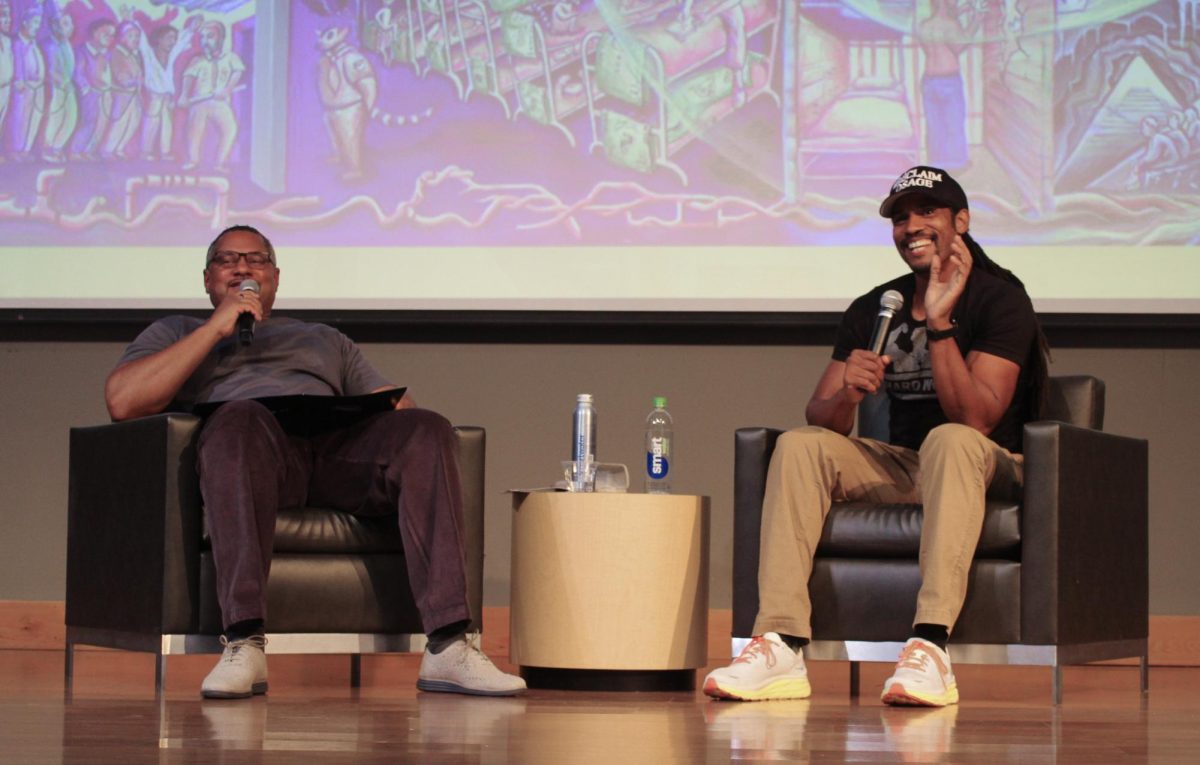
Caesar was also there to hear from Mike Africa Jr., a member of the MOVE organization who shares his story through his keynote speeches.
Africa Jr. was born in a prison cell due to his parents being arrested after a police raid and given a 100-year sentence. He then lived in an orphanage when he was taken away three days after his birth.
At age six, Africa Jr. witnessed a police bomb that was dropped in his family home, which killed 11 of his family members, five of whom were children in the same orphanage he was in.
However, it does not stop there, as Africa Jr. went deep into the mistreatment of some of the remains that happened.
“Alan Mann, who was a forensics pathologist from the University of Pennsylvania and his understudy, Janet Monge, instead of turning over the remains of the people they had, they kept them and they put them in their private collections,” Africa Jr. said.
According to Africa Jr., the two people they had were a 14 and a 13-year-old girl, and they used their bones as fundraising and research material.
“They taught classes at Penn and Princeton to over 5,000 students,” Africa Jr. said. “They even made YouTube videos of them holding them up, describing them as juicy and interesting.”
Once this was found out, there have been demands to give back the remains to the family, but it has still been unresolved as they are working on finding a solution with Penn.
However, through his journey and making awareness of the sentencing that was given to his family, he has managed to get both his mother and father out of prison.





